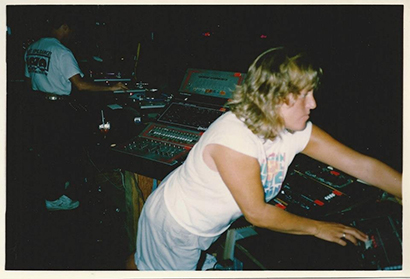Perfect Patching
Automated lighting consoles are full of features, many of which rarely get used. However there is one feature that is required for every single show: patching. A patch is a set of instructions that assign specific controls on the desk to fixtures and their attributes in the real world. Without a patch, no communication between the console and devices can take place. It is vital for lighting programmers to understand how to patch their console and how to use the various options within the patch window. While some of the terminology may change from desk to desk, the basic procedures remain the same regardless of the console.
The Trauma Team
If you have ever watched any of the reality TV shows about emergency rooms, you have probably noticed how well the staff works together to help the patient. I find it a striking resemblance to the way that an automated lighting programmer must relate to others on his/her team. A programmer must work well with each team member to ensure a healthy lighting contribution to the production. By studying this relation in comparison to an emergency trauma team, one can easily see the responsibilities that a programmer has with the production team.
Lighting Network Basics
Automated lighting programmers are constantly using new equipment and setup configurations. It is very important for programmers to understand how networking has become an integral part of many systems. While a full understanding of computer networking concepts, equipment, and topographies is not required, there are some basic networking principles that you need to be familiar with. The number of lighting devices connected together with wired or wireless networking equipment is growing on a daily basis, but the general purposes can be broken down into three unique situations. However, before exploring these categories, you must understand some basics of networking.
Would You Survive?
Change the Page
Nearly every automated lighting console has a concept that allows for multiple banks or pages of playbacks. These pages (as they are usually called) allow the user to immediately change the purpose and function of playback buttons on the desk. Pages are very important in many different genres of entertainment, and it is important for lighting programmers to understand the possibilities and features associated with them.
Blinded By the Light
Programming automated lighting requires much more than just pressing buttons on a console. A good understanding of the lighting fixtures and their capabilities is equally as important. In addition, the consideration of the effects of the lighting programming must be considered and evaluated during the programming sessions. The positions of the lights, the actions of the fixture parameters, and environmental conditions all can have an effect on your programming.
Obscure Fixture Features
Automated lighting fixtures are very complex robotic devices filled with mechanical and electrical features commanded by comprehensive software. The manufacturers of these fixtures fill them with many useful features, some of which are lesser known or understood. A good automated lighting programmer will take the time to learn the capabilities of his/her luminaires by reading the user manuals and DMX protocols/maps. Furthermore, some features are simple menu settings or DMX values that may not be included in the console’s fixture library. The following obscure fixture features can be found in many common lighting fixtures and are useful tools for creating original and dynamic lighting programming.
Random Thoughts
The Good Ol’ Disco Days
The Magical Layout
The Art of the Change
One of the greatest advancements in automated lighting programming over the last 10 years has been the ability to easily change fixture types from one to the other. As the market of available fixtures has increased, so too has the need to easily clone or change fixture libraries within a programmed show file. In the past this was accomplished through complicated copying routines and macros. However, even with the new tools built into consoles, it is important that programmers understand how to use these tools and how to prepare their show file for changes.
